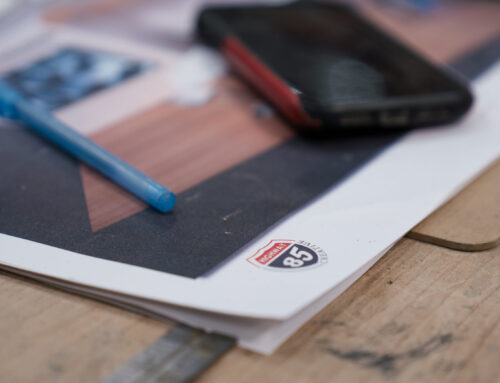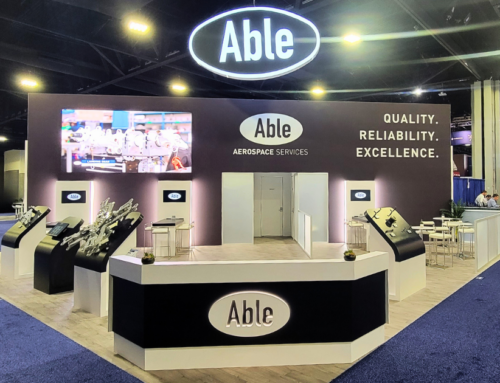Trade shows offer businesses a fun, fast-paced environment to reach new and potential clientele. With thousands occurring yearly, it is impossible and not cost effective to join every event, but you’re missing key marketing factors if you don’t attend or display in at least a few. Most notable are brand recognition, which tells customers who you are and what you sell/provide, and potential sales and reaching new customers.
Which Event is Right for Your Small Business?
Research is key. This includes knowing your market and the show’s potential market. However, displaying in an unrelated event can still pay off if the demographics align with your own, but that can also be a risky, costly move if you’re unfamiliar with trade shows, or you haven’t done the proper research.
So how do you research? Make a list of local, regional, and national shows you believe would be a good fit. Check their websites, e-mail whoever is in charge of the events, and look for other companies who’ve exhibited at previous shows and contact them too. Companies that aren’t direct competitors are generally more than happy to share their experiences.
Attend Other Shows
As I stated before, sometimes joining the trade show as a speaker or teacher is a better option. This is especially true if you’ve never been to a show before, but that doesn’t mean you don’t have anything to offer. Maybe you can speak with attendees, or you’re speaking to other owners. Either way, you’re still getting your name out there and building credibility for your company.
Another option is simply visiting like other customers. You get a better idea of your space design. Maybe you want to see what works and doesn’t work. Attending the event gives you a unique opportunity to think like a customer and see the event, and the take back is a better understanding of your potential customers when it comes time to attend as a vendor.
Design Your Trade Show Displays
You have your venue and dates. You have your budget. Now it’s time to start planning your space. You have about five seconds to catch attention. What does this mean? You need to convey who you are and what you offer. Also, keep in mind that potential customers should be able to see your booth and read banners from about 20 ft. away.
Unsure how to attract interest? Holding a raffle or contest is a great way to bring customers to your booth. It’s also a great way to build your mailing list, though you will have people signing up just because they can win something; don’t consider them hard sales leads. Once you’ve attracted people to your booth, make sure all materials are neatly arranged. This includes business cards, flyers, and goodie bags—if you’ve chosen to give them out.
Make a Marketing and Expense Budget for the Event
Budgets are extremely important. It doesn’t matter if you’ve visited hundreds of events or none. What can be unknown is the return on your investment; expect trial and error in your first few events. Still, they don’t need to break your budget, and you can go smaller, cutting costs where you can. Another option is being a keynote speaker or teaches a workshop—both add value to your brand.
Potential costs:
- Travel costs*—hotel, car rental, airfare, and food for staff.
- Booth rental
- Shipping Displays
- Advertisements—local paper, store banners, mailers, etc.
- Printed Materials—business cards, flyers, bags to hold samples, pens, etc.
- Product Samples—or fun gifts for your potential new customers
- Staff for the booth—if employees are unavailable, hiring outside for the event might be more cost-effective.
- Trade show fees—some require additional fees in addition to booth rental
- Card processing fees—are you prepared to take credit and debit payments at the event?
- Internet fees—this isn’t always included.
*Choosing a local event, if possible, can help small businesses save a tremendous amount of money in their budget by limiting the need for hotels, travel costs, and shipping their displays.
Set Personalized Goals for Your Company
You should develop reasons to attend and let that be the driving force; however, you should also develop goals for while you’re there and after the event too. A marketing plan will help keep you on track and it will be beneficial after the trade show to see which ones your company performs better. Be realistic in terms of direct sales, though, because you only have a small window to reach people, due mostly to the length of the event.
Prepare Your Team
Two methods of customer interaction are useful during the event: hard selling and provide knowledge with selling directly to those who express interest. Know your intention before going in and choose staff that will meet your goal. However, make sure your staff can readily acclimate and perform both roles. You don’t know what each customer will want and adapting to needs on the fly is a must.
Don’t forget to have a team member dedicated to social media and stirring excitement before and during the event. This could be tweeting, going live, or sharing pictures and snippets from the event. Almost every show will have a hashtag too. Video of product demos makes great marketing material for websites long after the event ends too.
After the Event Ends
Compile any leads and schedule calls, e-mails, or meetings. Don’t wait too long to follow-up with potential customers once the event ends. Have your team reach out while it’s fresh in the customer’s minds.
Unrelated to selling, often an event will offer discounts for returning participants. Sometimes, it’s money off or getting a better location/upgrades. It doesn’t hurt to ask if it isn’t offered and any savings can be rolled over to another part of your marketing plan.
Lastly, once the buzz settles, you can see if the trade show improved your leads and sales. Don’t try to measure this too soon, though, as it can take weeks or months to really see the impact.
Trade shows are meant to be exciting, and they’re certainly a change of pace with rarely a dull moment. Remember to keep your mind open and most of all, relax. Connect with potential customers and with people who already are customers. Make each person feel valued by listening more and talking less, and increase the value of your own company and trade show experience at the same time.




